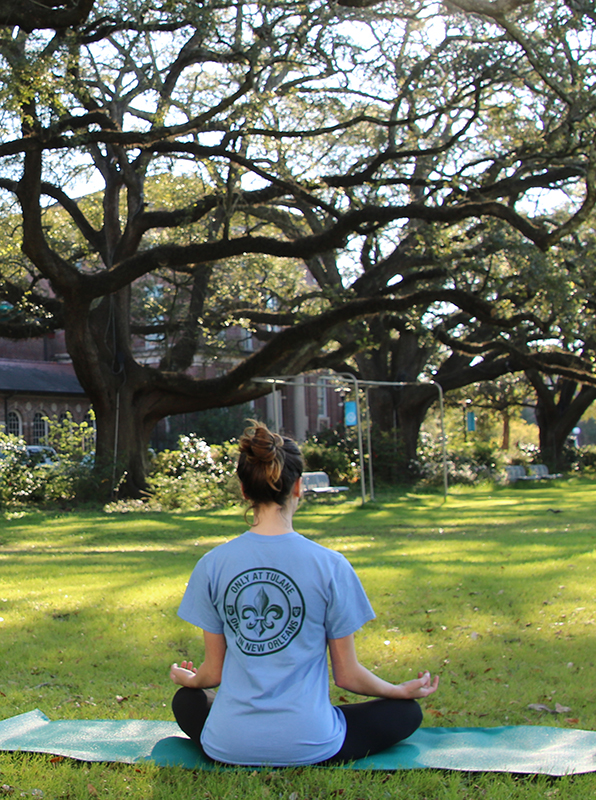
In a 2016 essay in New York magazine titled “I Used to be a Human Being,” writer Andrew Sullivan examines the effects of excessive screen time and discusses the results of a study on young adults and cell phones: “participants were using their phones five hours a day, at 85 separate times…technology has seized control of around one-third of these young adults’ waking hours.” Several years ago, as a theatre director and professor, I began to notice how disengaged my actors were as they entered the rehearsal room. A full day of phones, laptops, and other screen time had left them frazzled, talking too much, and very disconnected from their bodies and minds.
In response, I began to develop a practice called Sacred Space, originally introduced to me by my colleague Kim Rubinstein at the University of California, San Diego. Although Rubinstein and I practice our own versions, the impulse is the same—to create a threshold that the students can walk across upon entering class, and to create a quiet, safe space on the other side, a space where students can drop in and prepare themselves for the creative journey ahead.
Sacred Space is generally practiced in a warm, low-lit room, with a clean floor and plenty of open space. Students are asked to enter the room in silence, remove their shoes, find a place on the floor, and lie down. As the group assembles, they quietly work to find floor space and avoid talking or acknowledging each other while gentle music plays in the background.
Once the group has assembled, I begin to cue them to check in with themselves physically, emotionally, and mentally. Long stretches of silence, guided relaxation, and breath awareness are integral to the entire experience. We begin in stillness, and soon work our way through gentle yoga stretches, primarily with the eyes closed, so that sensation is emphasized, rather than the external look of any particular pose. The work is very quiet and focused. As the actors begin to move toward standing, they open their eyes, and begin to incorporate their fellow ensemble members and the room around them into their field of awareness. The goals of Sacred Space—to slow down, to breathe, to inhabit the body, to connect to the group—are all of dire necessity in the theatre. If we are charged with reflecting the human condition, we must first reconnect with our fragile human containers.
Sacred Space becomes more external toward the end, with actors moving through non-verbal movement exercises together, emphasizing eye contact and presence. This is our ritual every day, from the first rehearsal through tech rehearsals and performances. Within this basic framework, Sacred Space may include yoga, mindfulness meditation, vocal exercises, theatre games, and even group singing, on occasion. The key element is the silence, and from that quiet void ultimately springs greater amounts of hard work, attention, and connection.
There is so much about the theatre that appears external. Audience members often assume that actors are outgoing, jovial people, and sometimes that’s true; however, many actors are exactly like the general population: isolated, exhausted, and addicted to technology. For many years, Sacred Space has been my antidote to this dilemma, and I have seen remarkable results in my students, as well as in myself as the leader of the room—deeper focus; stronger emotional, physical, and mental connection; and a greater sense of ensemble and purpose.

